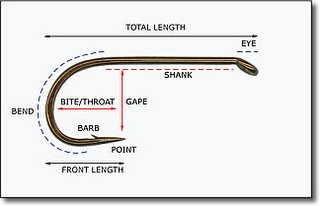Nature has created innumerable fish species for us to choose from when deciding to put fish on the menu. Through the ages, fishermen have invented and tried out quite a number of ways of catching fish -- line and hooks being one method that has survived the centuries.
In this context, it is quite fascinating to think about the fact that many present-day Mustad hook patterns are results of "trial and error" from the Stone Age up to the present. Why a particular hook has been designed with a particular gape, bend, shank, barb and eye, etc., is a result of experience laboriously gained from the collective efforts of hundreds of generations of fishermen.
In terms of product development, the difference between our time and previous times is primarily a matter of speed and more sophisticated means of production and materials. Basic hook patterns, on the other hand, have not been subjected to much change.
The section on The History of the Fish Hook tells you quite a lot about the historical development of fish hooks; in this section we want to give you the basics of hook anatomy.
Getting to know hook terminology and what it stands for will make it easier for you when you need to find a particular hook for a particular purpose.
Hook Sizes, Patterns and Parts
In the illustration above, the various parts of the hook are shown with their proper names.
The two most important dimensions of a hook is its gape, the distance between point and shank, and the depth of the throat. Generous dimensions ensure deeper penetration of the point and better holding power of the fish.
Hook Measurements
Unfortunately, there is no uniform system of hook measurements. Visual familiarity with the various hook patterns is the only workable gauge for the serious angler. Although attempts have been made to set a standard by measuring the hook in fractions of an inch, the system has never been successful because it merely represents the length of the shank. A hook is really two-dimensional since the gape can vary greatly from one pattern to the next.
The distance between point and shank
The distance from the apex of the bend to its intersection with the gape.
Mustad measurements:
Mustad Hooks range in size from 19/0 down to 32.Size 19/0 is the largest shark hook, size 32 is the smallest fly hook we make.

No comments:
Post a Comment